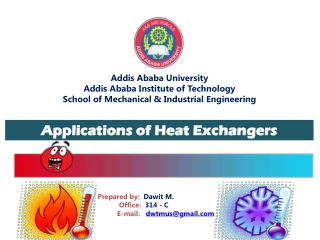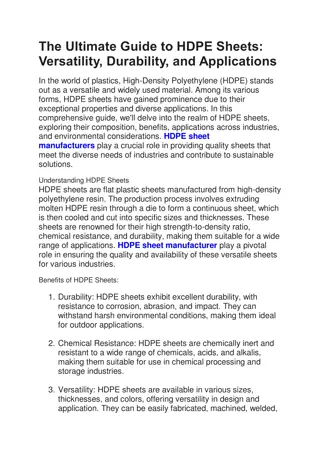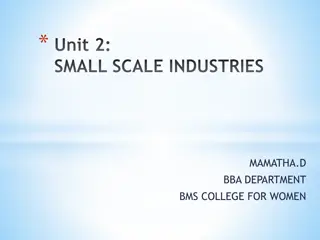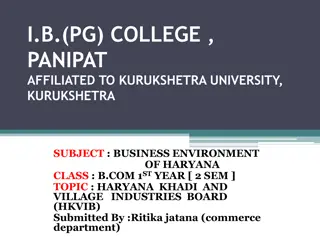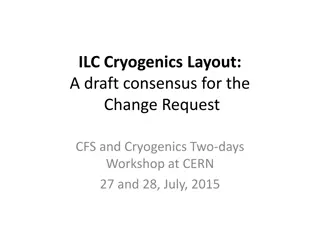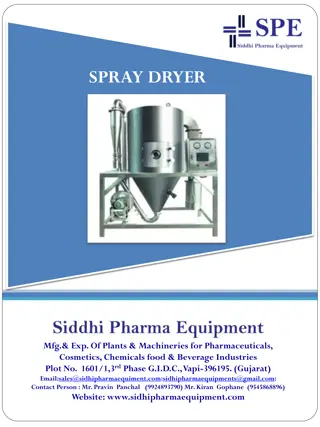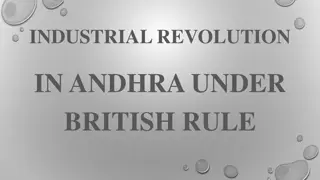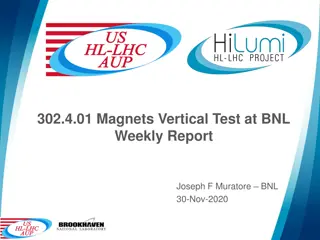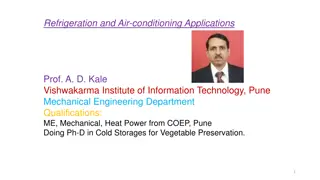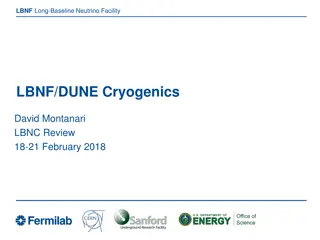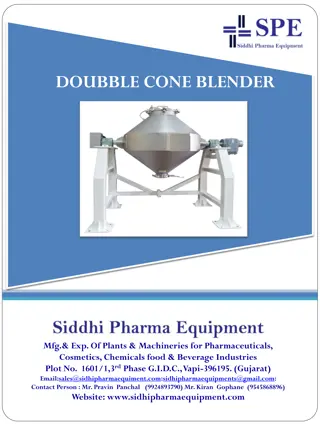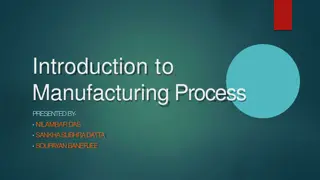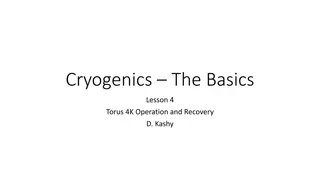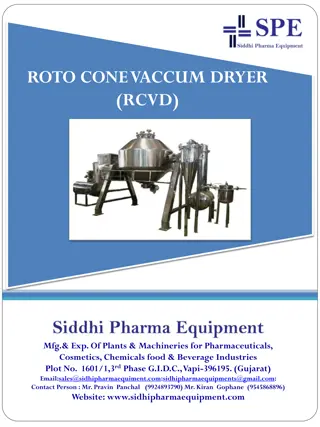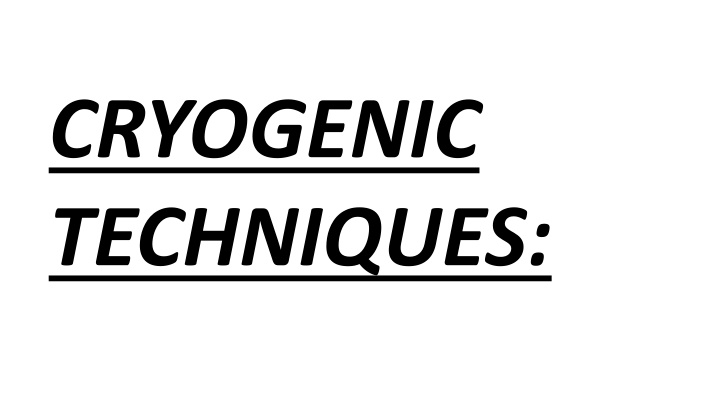
Applications of Cryogenics in Various Industries
Diverse applications of cryogenics in space technology, mechanical advancements, medical procedures, and gas industry processes. From rocket propulsion to cryosurgery, cryogenics plays a crucial role in enhancing performance, efficiency, and preservation across different sectorsD
Download Presentation

Please find below an Image/Link to download the presentation.
The content on the website is provided AS IS for your information and personal use only. It may not be sold, licensed, or shared on other websites without obtaining consent from the author. If you encounter any issues during the download, it is possible that the publisher has removed the file from their server.
You are allowed to download the files provided on this website for personal or commercial use, subject to the condition that they are used lawfully. All files are the property of their respective owners.
The content on the website is provided AS IS for your information and personal use only. It may not be sold, licensed, or shared on other websites without obtaining consent from the author.
E N D
Presentation Transcript
CRYOGENIC TECHNIQUES:
Temperature is defined as degree of hotness/coldness of a body. 2.73K is the temperature of the interstellar space (vacuum). 109 K is the average temperature at the centre of hottest stars. The lowest ever temp., ever achieved in a laboratory are: 450pK by Bose-Einstein condensation. 250pK by Nuclear magnetic ordering. Cryogenics is that branch of physics, which deals with production, Maintenance and Applications of low temperatures Below 123K 123K or -1500 C is the marking line between cryogenics and refrigeration.
Applications of cryogenics: Space: Rocket propulsion Cryogenic engines are powered by cryogenic propellants. Liquid Hydrogen is used as a fuel to propel the rocket. Liquid Oxygen is used as an oxidizer. Cooling of Infra-Red (IR) sensor Cooling of IR detectors, Telescopes, Cold probes, etc. are some of the major applications of cryogenics. Development of miniature and small cryo-coolers for satellites for an improved accuracy and reliability of earth observation. Space simulation Space simulations chambers are realistic environment for space craft. The cold space is simulated at cryogenic temperatures by use of LN2. The levels of vacuum required in space simulation chambers are vey high. This is achieved by the use of cryo pumps and turbo molecular pumps.
Mechanical: Magnetic Separation Magnetic separation technique is used in variety of applications like enhancing the brightness of kaolin, improving the quality of ultra-high purity quartz etc.- Superconducting Magnet ensures proper separation. Heat treatment The lives of the tools, die castings & their dies, forgings, jigs & fixtures etc increase when subjected to cryogenic heat treatment. The life of guitar strings increases by 4 to 5 times with no need for tuning Recycling Cryogenic recycling - turns the scrap into raw material by subjecting it to cryogenic temperatures. This is mostly used for PVC, rubbers.
Medicine: Cryosurgery Cryosurgery is a novel technique in which the harmful tissues are destroyed by freezing them to cryogenic temperature. Cryosurgery has shorter hospital stay, less blood loss, and small recovery time. It is generally used in patients with localized prostate and kidney cancer, skin disorders, retinal problems, etc. Cell preservation Systems are developed to preserve blood cells, plasma cells, human organs and animal organs at cryogenic temperatures. Food preservation Preserving food at low temperature is a well known technique. Cooling of sea foods, meat (sea export), milk products for long time preservation is achieved by use of LN2.
Gas Industry: Liquefaction The transportation of gases across the world is done in liquid state. This is done by storing the liquid at cryogenic temperature. The use of inert gases in welding industry has initiated higher demand for gas production in the recent past. Cryogens like LOX, LH2 are used in rocket propulsion while LH2 is being considered for automobile. Separation Steel industry Oxygen is used in the production of steel. Basic Oxygen Furnace (BOF) uses oxygen instead of air. Nitrogen and argon are primarily used to provide an inert atmosphere in chemical, metallurgical and welding industries Storage Industrially important gases like, oxygen, nitrogen, hydrogen and helium are stored and transported in liquid form.
Superconductivity: NMR, MRI The NMR (Nuclear Magnetic Resonance) is used by the pharmaceutical industry to study the molecular structure. It has a superconducting magnet (10 T ~25 T) and the accuracy of measurement increases with field strength. The MRI (Magnetic Resonance Imaging) machines are used for body scanning. The SC magnets for both NMR and MRI machines are cooled by liquid Helium. Maglev Locomotion Maglev Train runs on the principle of Magnetic Levitation. The train gets levitated from the guide way by using electromagnetic forces between superconducting magnets on the vehicle and coils on the ground. This results in no contact motion and therefore no friction. Transformer & Generators Superconducting transformers and generators have coils (and cores sometimes) maintained at low temperature to minimize the I2 R (copper) losses.
High Energy Physics: CERN CERN is an European organisation for nuclear research which was founded in 1954. It consists of a 27Km accelerator ring with four detectors. All the magnet systems (SC) and its accessories are kept at 1.9 K using the liquid helium. A liquid nitrogen layer (77 K) is used as shielding for liquid helium. It is an experiment seeking answers to Big Bang theory and collision of atomic particles. ITER ITER (International Thermonuclear Experimental Reactor) is an engineering project for nuclear fusion reactor. The superconducting magnets are maintained at low temperature by gaseous helium. The experiments are carried out to enable mankind to generate energy for future.

